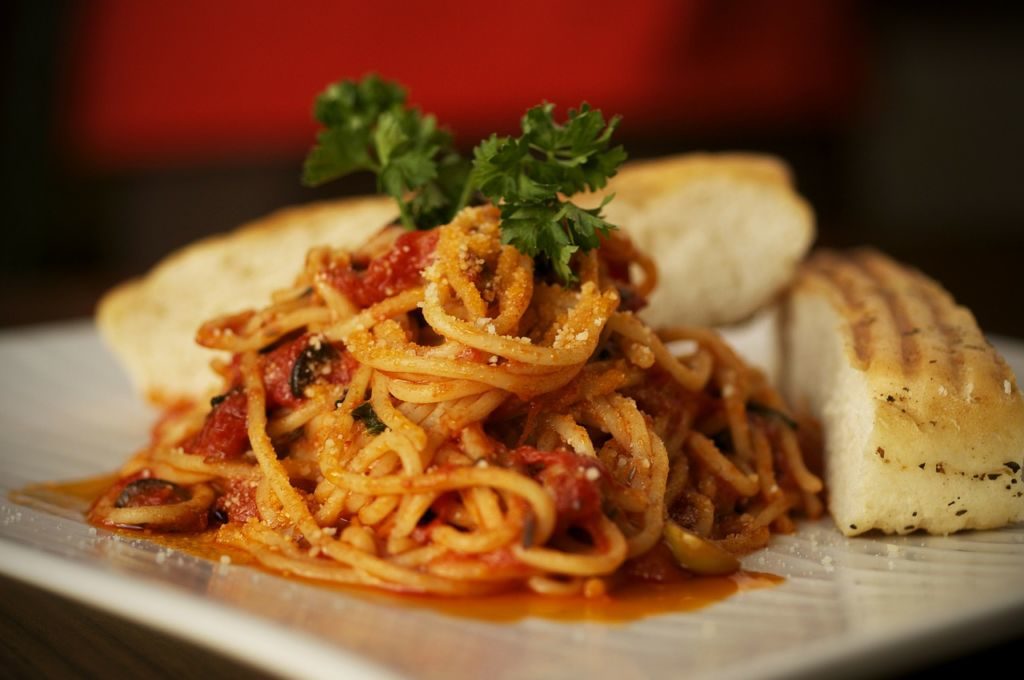Enjoying Italian and Mediterranean cuisines
Ah, the Mediterranean. The blue seas, the white sandy beaches, the gorgeous weather, the beautiful people on the French and Italian Rivieras. And, of course, the food. 21 countries from Africa, the Middle East and Europe border the Mediterranean, so just imagine the wide variety of cuisines that have developed ever since the Roman Empire ruled over the whole area.
Due to the similar climate and soil conditions, Mediterranean foods generally heavily feature olive oil, breads (and in the case of Italian cuisines, pasta), and grape wine, as well as tomatoes. The popular ‘Mediterranean diet’ is based on Mediterranean cuisine, with emphasis on healthful ingredients, fresh fruits and vegetables. Mediterranean cuisine is also very saucy; you should try the large number of dips and sauces that often accompany the main and side dishes.
Because of this, you will find pretty much the same dishes as you travel throughout the Mediterranean, merely with different names. For example, the very delicious – if not so healthful – Greek souvlaki, Turkish shish kebab and the shashlik are all almost identical (pieces of meat stuck on a skewer and then grilled, much like our own satay). The same is true of the Arabic shawarma, the Greek gyros (yiros in parts of Australia) and the Turkish doner kebab (rotisserie-cooked meat slices in a pita bread wrap – GoBear Malaysia loves this stuff and recommends it to all).
While Italy is one of the Mediterranean countries, when speaking of Italian cuisines, pizza and pasta are usually what come to mind – and indeed, these are Mediterranean foods. However, Italy is home to so much more. This includes the creamy, rice-based risotto (similar to the Spanish paella), cured meats such as salami to pastrami, as well as the water-based ice cream gelato. Italy’s specialities have made their way across the world. Italian cuisines are very flavourful, relying on a mix of both fresh and preserved ingredients. Bellissimo! Buonissimo!
The Italian and Mediterranean influence on Malaysian food outlets is obvious. From Italiannies to Santino’s Pizza, pizzas and pastas are well-represented everywhere – even in food trucks, believe it or not, as are kebab wraps. There are a number of specialist Italian, Spanish, Moroccan and Lebanese restaurants in major urban centres as well. Most if not all of these eating places accept credit cards, and many of them have tie-ups with credit card issuers that provide special privileges for cardmembers who dine in. For example, CIMB credit cards give 15% the total bill at Tarbush restaurants. Foreign bank credit cards also have similar privileges; for instance, UOB credit cards give 10% discount (minimum spend of RM50) on a la carte food at Olive Garden and 15% off at Fuzio Bar & Restaurant.
Meanwhile, for those who prefer their Mediterranean or Italian food sprawled on the couch watching TV at home, HSBC credit cards have the SmartPrivileges programme that offers 20% off the total F&B bill for new Foodpanda customers (10% for existing customers) with a minimum spend of RM50 in a single receipt. GoBear Malaysia recommends you check your credit card issuer’s dining privileges programme to see whether similar privileges and/or discounts are available for Italian and Mediterranean restaurants. Check out more here!
Speaking of Foodpanda, did you know that it’s having a World Food Tour? Order your food from Foodpanda until the end of November and stand a chance of winning return trips to Japan for two! Now isn’t that food for thought?
